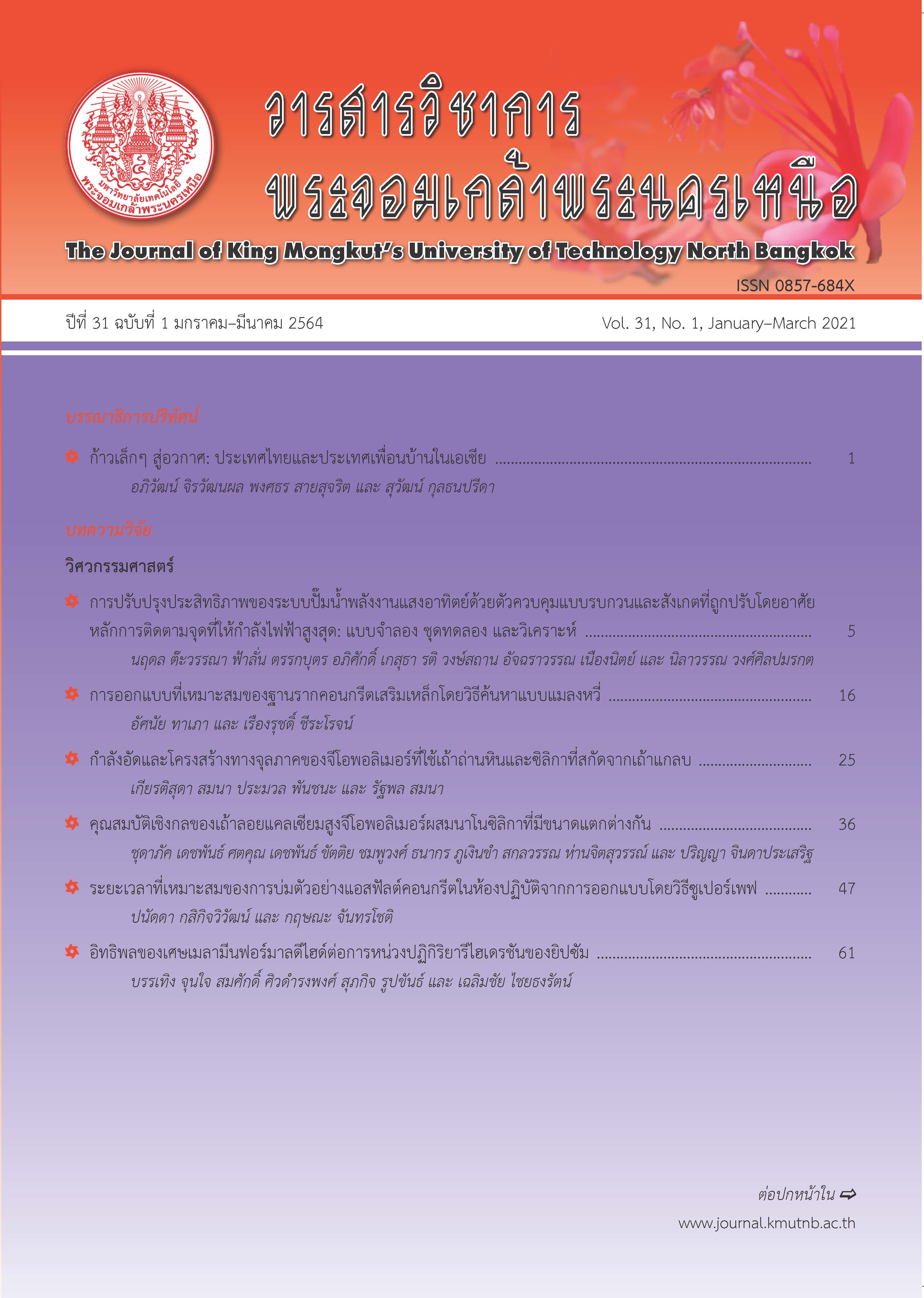Influence of Melamine Formaldehyde Waste on Retardation of Gypsum Rehydration Reaction
Main Article Content
Abstract
Melamine formaldehyde waste is thermosetting plastic waste which cannot be recycled with heat. Its disposal method is landfill which is not environmentally friendly. There are some materials for Gypsum board production including retarders. Retarder is one of the important additives that retards the gypsum rehydration reaction. This research studies the influence of melamine formaldehyde waste on this reaction and how to recycle it. The melamine formaldehyde waste powder was employed to produce gypsum specimen. The replacements were 5%, 10% and 20% by plaster weight with particle size less than 200, 200–500, 500–1,000 and 1,000–5,000 micrometers and constant ratio of water to plaster was 0.75. Physical and mechanical properties of gypsum specimen containing melamine formaldehyde waste powder were investigated on initial setting time, final setting time, density, flexural strength, compressive strength, surface hardness, water absorption and microstructure. The experimental results revealed that the initial setting time, final setting time, surface hardness and water absorption of the new composite material increased. Therefore, it created more retardation of gypsum rehydration reaction. The new composite had the flexural strength and compressive strength complied with the UNE-EN 13276-1: 2009 standard with the potential to save waste disposal cost.
Article Details
The articles published are the opinion of the author only. The author is responsible for any legal consequences. That may arise from that article.
References
[2] A. J. Rivero, A. G. Báez, and J. G. Navarro, “New composite gypsum plaster – ground waste rubber coming from pipe foam insulation,” Construction and Building Materials, vol. 55, pp. 146–152, 2014.
[3] Y. Ding, Y. Fang, H. Fang, Q. Zhang, F. Zhang, and W. C. Oh, “Study on the retarding mechanism and strength loss of gypsum from hydrolyzed wheat protein retarder,” Journal of the Korean Ceramic Society, vol. 52, no. 1, pp. 28–32, 2015.
[4] M. Mahai, “Mechanical properties of recycled material from waste melamine at various compositions formed by hot molding and cold molding processes,” M.S. thesis, School of Mechanical Engineering, Suranaree University of Technology, Thailand, 2012 (in Thai).
[5] Gypsum binders and gypsum plasters — Part 2 : Test methods, UNE-EN 13279–2, 2006.
[6] A. A. Khalila, A. Tawfika, A. A. Hegazya, and M. F. El-Shahatb, “Effect of some waste additives on the physical and mechanical properties of gypsum plaster composites,” Construction and Building Materials, vol. 68, pp. 580–586, 2014.
[7] S. Serrano, C. Barreneche, A. Navarro, L. Haurie, A. I. S. Fernandez, and L. F. Cabeza, “Study of fresh and hardening process properties of gypsum with three different PCM inclusion methods,” Materials, vol. 8, no. 10, pp. 6589–6596, 2015.
[8] Gypsum binders and gypsum plasters — Part 1: Definitions and requirements, UNE-EN 13279–1, 2009.
[9] Standard methods for physical testing of gypsum, ASTM. C472–499, 2009.
[10] Standard specification for gypsum board, ASTM. C1396 / C1396M–17, 2017.

